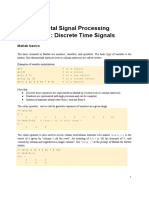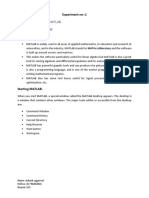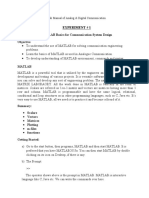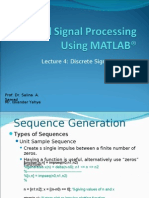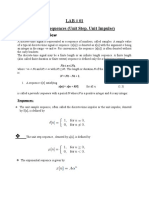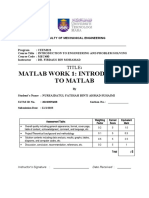0% found this document useful (0 votes)
96 views28 pagesDSP Lab-01
This document provides an overview of digital signal processing using MATLAB. It begins with introductions to MATLAB, including its interfaces, commands, and basic functions. It then discusses discrete time signals like impulse, step, and exponential sequences. Operations on discrete time signals such as addition, multiplication, scaling, time shifting, and folding are covered. The document concludes with an explanation of linear convolution using MATLAB code examples.
Uploaded by
Mekonen AberaCopyright
© © All Rights Reserved
We take content rights seriously. If you suspect this is your content, claim it here.
Available Formats
Download as PPTX, PDF, TXT or read online on Scribd
0% found this document useful (0 votes)
96 views28 pagesDSP Lab-01
This document provides an overview of digital signal processing using MATLAB. It begins with introductions to MATLAB, including its interfaces, commands, and basic functions. It then discusses discrete time signals like impulse, step, and exponential sequences. Operations on discrete time signals such as addition, multiplication, scaling, time shifting, and folding are covered. The document concludes with an explanation of linear convolution using MATLAB code examples.
Uploaded by
Mekonen AberaCopyright
© © All Rights Reserved
We take content rights seriously. If you suspect this is your content, claim it here.
Available Formats
Download as PPTX, PDF, TXT or read online on Scribd
/ 28




